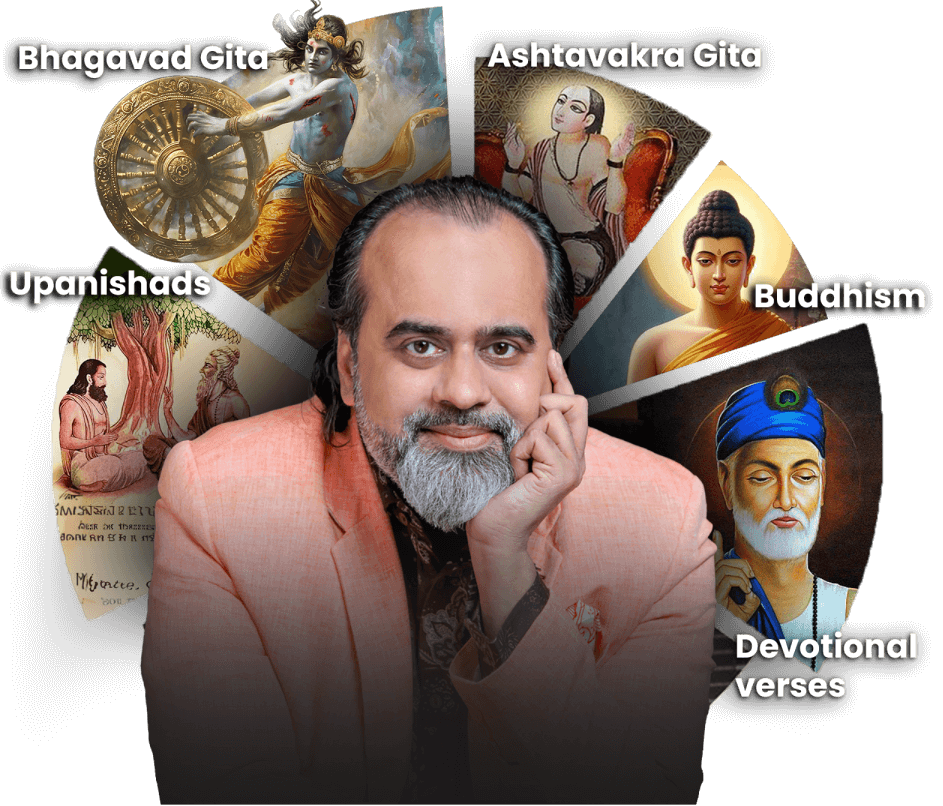One Way to Still the Mind Is to Still the Body


स्पर्शान्कृत्वा बहिबाहातान्तरे भुवो।
प्राणापानो समो कृत्वानासाभ्यन्तरचारिणो।। 5.27 ।।
sparśhān kṛitvā bahir bāhyānśh chakṣhuśh chaivāntare bhruvoḥ
prāṇāpānau samau kṛitvā nāsābhyantara-chāriṇau
यतेन्द्रियमनोबुद्धिमुनिर्मोक्षपरायणः।
विगतेच्छाभयक्रोधो यः सदा मुक्त एव सः।। 5.28 ।।
yatendriya-mano-buddhir munir mokṣha-parāyaṇaḥ
vigatechchhā-bhaya-krodho yaḥ sadā mukta eva saḥ
Keeping the external objects outside, the eyes at the juncture of the eyebrows, and making equal the out-going and in-coming breaths that move through the nostrils, the contemplative one who has control over his organs, mind and intellect, should be fully intent on liberation and free from desire, fear and anger. He who is ever, is verily free.
~ ~ Shrimad Bhagwad Gita, Chapter 5, Verses 27, 28
✥ ✥ ✥
Questioner: Why is Shri Krishna recommending us to do physical acts of control such as fixing gaze between eyebrows, or breathing in equilibrium? Do such actions have any value in spirituality?
Acharya Prashant: Yes, they do have value in Spirituality. The body and the mind are obviously related. One of the ways to bring the mind to stillness is to bring the body to stillness; many a times this is the only way. Why? Because the body is gross and easy to perceive. The movement of the body is actions, and actions cannot be disputed.
You can easily detect your actions; actions leave a trail behind them. Your actions can be recorded in a camera. Whereas the movement of the mind is thoughts, and thoughts are far more difficult to detect. They are subtle, not easily perceivable.
The one who lives in a gross dimension will find it very difficult to detect something subtle. Unfortunately, most of us live in very gross dimensions. We find it very difficult to catch hold of, see, and witness thoughts, whereas it is far easier for us to do something with our actions.
You can watch your palm, right? It’s straightforward. But watching your thoughts is not so straightforward. So if you are to do something with your thoughts, it becomes difficult; it is possible only for someone who is living at a subtle level of life — which most of us aren’t.
Then comes the utility of methods like these.
Bring the body to stillness, and from that it is hoped that the mind will also come to a certain stillness. Better than this would have been to work on the mind, because the mind is more fundamental than the body.
If you work on the mind, then the body would automatically be taken care of.
But a vast majority of people are just incapable of working on the mind. To them it is advised that you work on the body because you have lived at a bodily level; that’s what all your life has been — living at the level of the body. So, work on your body.
You do not know how to center the mind, fine. At least learn to concentrate on the body. You cannot watch your tendencies, alright. At least watch your breath as you inhale and as you exhale. In some way watching the inhalation and exhalation of breath is parallel to watching the rise and fall of thoughts, though in a more gross way.
Are you getting it?
So, just as a cause brings about an effect, similarly if you can somehow create an effect, the effect brings about the cause. When the mind is still, it shows up in the activity of the body. If you can regulate the activity of the body, it will bring about a certain stillness of the mind.
Though, remember, that is not really the best way to come to the mind’s stillness. And that is why all physical techniques are just a stepping stone to the world of the mind.
All techniques in which you learn to concentrate in the middle of the eyebrows or you learn to watch the breath are just a form of preparation, they are a preparatory course after which you can step into the real world of Yoga.
So, in case you are someone who is skilled enough and subtle enough to work directly on the mind, you do not need to bother about the body at all. But honestly, if you’re not someone who is able to really be with the mind, and watch it without attachment, without prejudice, then it is helpful to be a little humble and start with the body.
